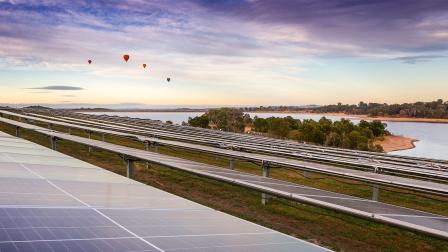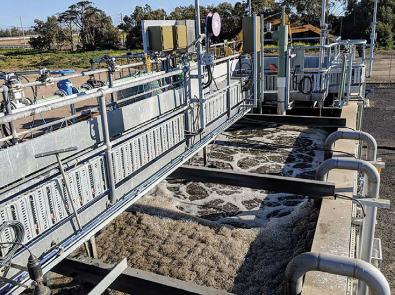A two-and-a-half year trial of shortcut nitrogen removal – potentially the ‘next big thing’ in domestic sewage treatment – has shown promising results, potentially transforming how we treat wastewater while saving costs. Read this case study to learn more.
Sustainable Development Goals:
Goal 6: Clean water and sanitation
Goal 13: Climate action
Background
Nitrogen removal, a vital step in the sewage treatment process at the Western Treatment Plant, reduces nutrients in treated water discharged to Port Phillip Bay. Conventional nitrogen removal uses bacteria that need large quantities of oxygen and carbon – and consequently has a high energy demand.
Recent work has revealed a shortcut for the nitrogen removal process that greatly reduces the oxygen and carbon needed. Although well established in Europe and the USA for processing concentrated digester side streams, shortcut nitrogen removal is only just starting to be used to treat the more diluted whole sewage flow.
However, cultivating the right bacterial population is not a simple science. Our Western Treatment Plant does not have a digester with a nutrient-rich side stream, presenting a number of implementation challenges.
Research focus
Potentially the ‘next big thing’ in domestic sewage treatment, shortcut nitrogen removal could transform the way we treat wastewater, and save costs for Melbourne Water and our customers.
A recently-concluded two-and-a-half year trial of the process has shown promising and significant results. A demonstration plant was able to continuously maintain the right balance of bacteria over the full range of expected conditions at the Western Treatment Plant, representing a global first for continuous robust operation in temperate conditions.
Outcomes
The process achieved a 35 to 45 per cent improvement in carbon efficiency, which will allow us to continue achieving our nitrogen discharge targets without compromising renewable energy production.
Translating the learnings to the renewal of the existing 55E Activated Sludge Plant has also significantly reduced the risks of adopting this new process. The bioreactor volumes have also been reduced, thereby saving capital expenditure.
In addition to the direct outcomes, the demonstration plant has also enhanced the skills of our staff: providing several graduates with hands-on experience operating a novel wastewater treatment process, without the risk of failing our EPA discharge licence.
Findings have been presented internationally and nationally at several conferences in places such as Chicago, Shanghai, Singapore and Brisbane, helping to establish Melbourne Water as an innovation leader on the global stage.
You may also like...
Delivering on the Sustainable Development Goals
This report outlines Melbourne Water's unwavering commitment to advancing sustainability through the United Nations Sustainable Development Goals (SDGs).
Our Path to Net Zero
We’re taking action on climate change to protect the natural resources that sustain us so Melbourne remains a great place to live.





